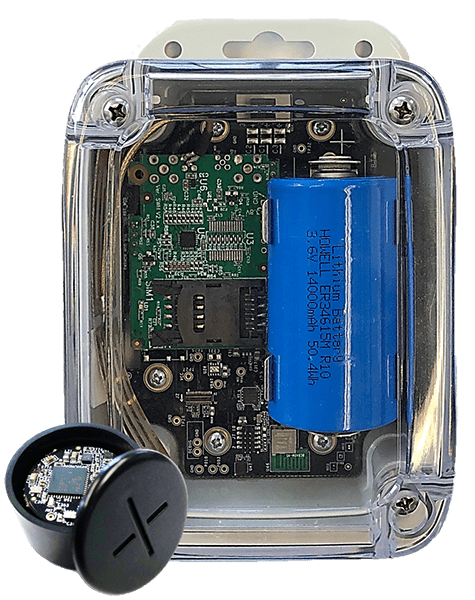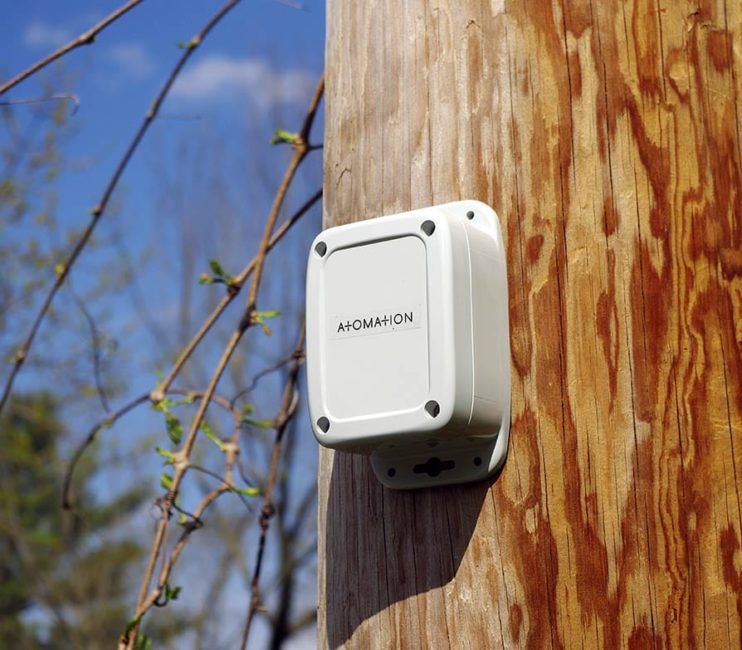Atomation: Leveraging IoT to Make Legacy Equipment Smart

The first generation of “smart factories” increased their output, utilization and productivity by 10% over three years by adding Internet of Things (IoT) technologies according to a study by Deloitte and the Manufacturer’s Alliance for Productivity and Innovation. By 2022, those manufacturers expect productivity to increase to 12%.
Some context makes those numbers even more impressive. The study also shows that the annual U.S. labor productivity growth rate increased by just 0.7 percent between 2007 and 2018.
With those kinds of proven benefits, why isn’t every manufacturer going smart? In many cases, it’s because they assume it would be too difficult and too expensive to add IoT sensors, controllers and other devices to decades-old equipment.
Not so. Making legacy equipment smart with IoT doesn’t have to be a long, expensive, custom project. For instance, a global plant engineering firm that serves over 250 facilities added IoT sensors to monitor motor vibration and temperature on a variety of legacy equipment to enable predictive maintenance for its customers. Those customers save money because the sensors provide instant access to equipment status and health, eliminating the expense of periodic checkups that are unnecessary since everything is functioning normally.
The same benefits apply to other verticals with a lot of legacy equipment, such as electric utilities. One electric company added IoT sensors to its electric poles to quickly pinpoint damage and speed restoration. That information saves money because the crews no longer waste time driving miles of line in a hunt for the pole responsible for the outage.

Telit’s Cellular Modules Are the Right Combination of Flexibility, Affordability and Reliability
To enable their digital transformations, a plant engineering firm and an electric company turned to Atomation, a company specializing in IoT and edge computing for utilities, manufacturing and logistics. Unlike traditional supervisory control and data acquisition (SCADA) and industrial control systems, Atomation’s solution doesn’t require specialized wiring and programming, saving time and money.
When Atomation wanted to add cellular connectivity to its portfolio to provide customers with additional flexibility, it selected Telit’s ME910 module. With downlink and uplink speeds of 300 kbps, the ME910 is designed for ultralow power consumption, moderate data rates and affordability. For example, the Atom devices are battery-powered, so a highly power-efficient module is critical for maximizing their service life.
Their cellular module is certified by large carriers around the world, including AT&T, Verizon and U.S. Cellular, which shortened product-to-market timelines for Atomation.
Eran Keshet, Atomation CTO

The ME910 also supports LTE Cat M1/NB1 under 3GPP Release 13 (Rel. 13). This standard is designed to meet the unique requirements that many IoT applications have. For example, Rel. 13 provides enhanced coverage, with up to +15 dB/+20 dB in maximum coupling loss compared to other cellular technologies. That helps ensure reliable connections with IoT devices even when they’re deep inside buildings or surrounded with metal equipment that attenuates signals.
The Telit module is a reliable and affordable solution for Atomation, we rely on the cellular expertise of Telit as we develop products, greatly reducing our development times and ensuring a fast product launch.
Guy Weitzman, Chief Platform Officer
Atomation also chose Telit OneEdge?, which simplifies the design, deployment and management of IoT solutions. The ME910 is preprovisioned with OneEdge software, then tested and network certified, making them ready to connect to the cloud once they’re activated at Atomation customer sites. OneEdge also lays the foundation for Atomation and its customers to migrate to 5G IoT solutions when they’re ready.
OneEdge also replaces traditional, physical SIM cards with software versions. These embedded SIMs make it easier for Atomation and its customers to switch between mobile operators and take advantage of better coverage or better rates. OneEdge also provides cryptographic-level security to protect the confidential data that many IoT applications use.
We came to Telit to solve our HTTP disconnection issues. In an hour, Telit OneEdge provided a fast analysis and a solution that required no R&D efforts. Moreover, with only five units, OneEdge has already saved us efforts with remote troubleshooting and solved issues encountered in the field.
Eran Keshet, Atomation CTO
